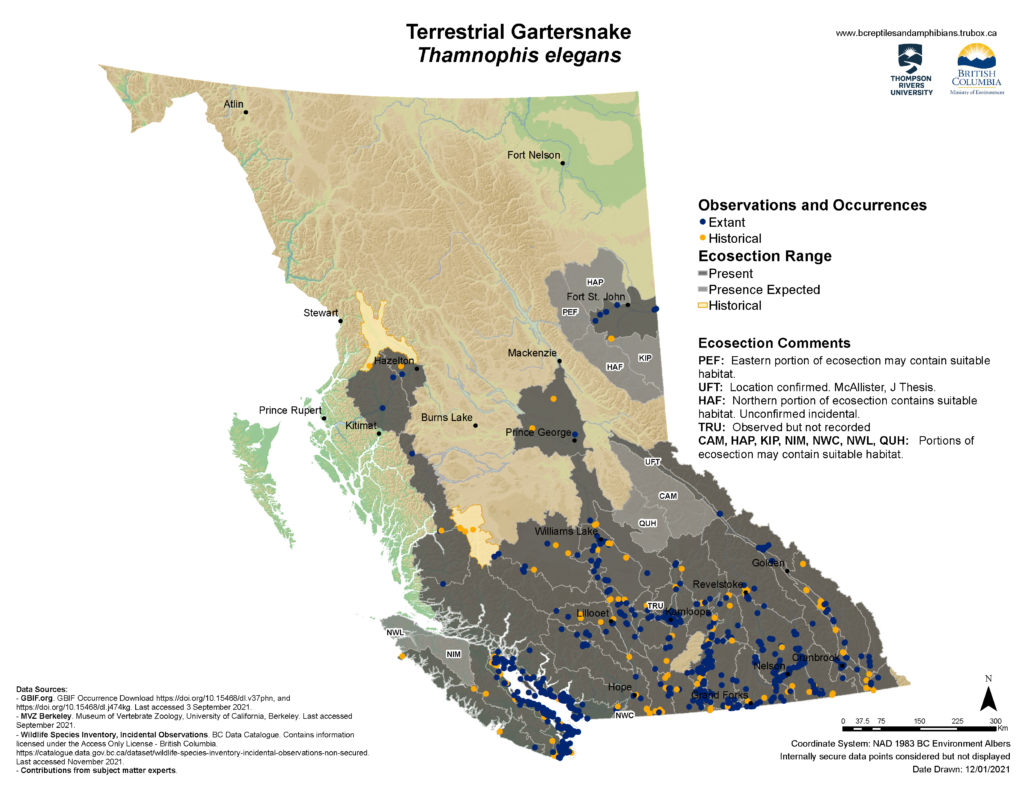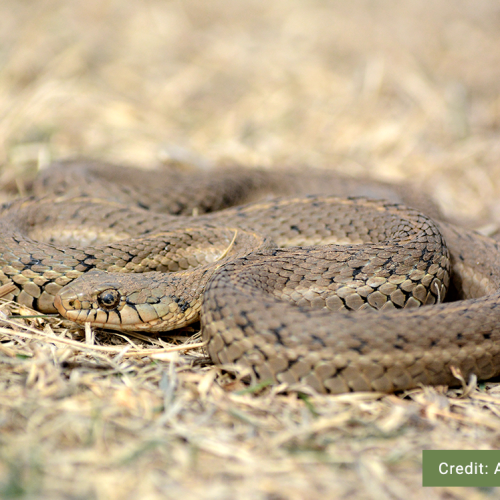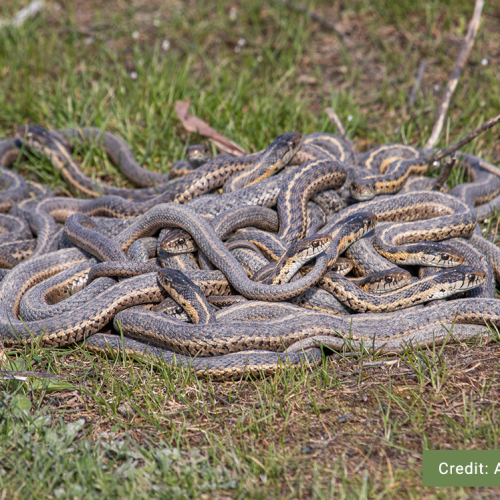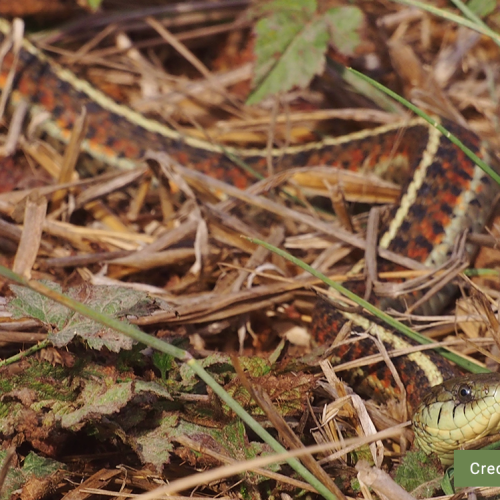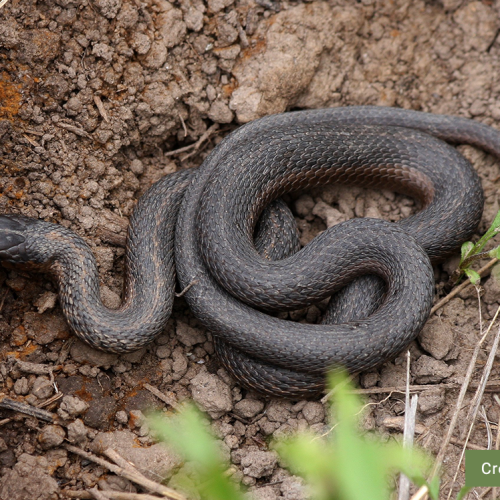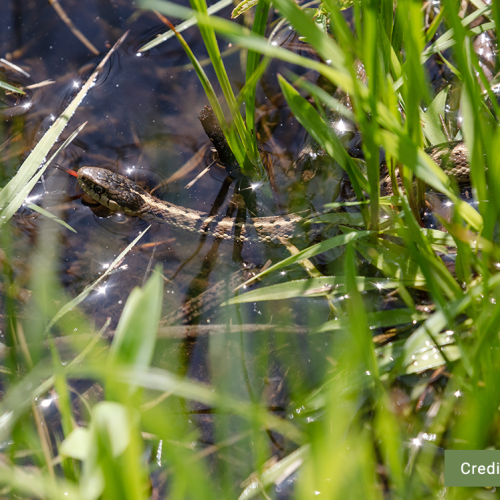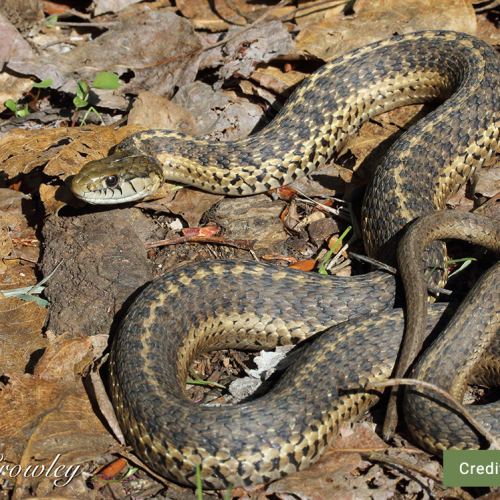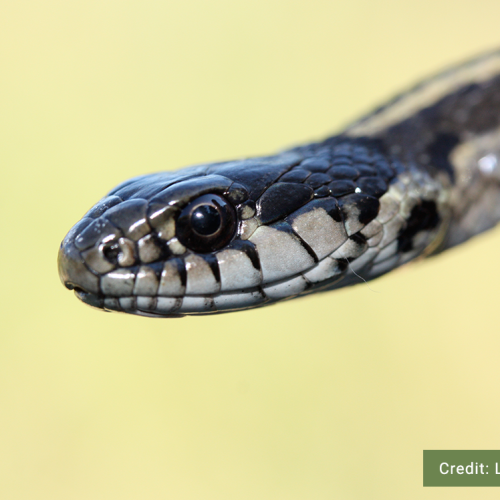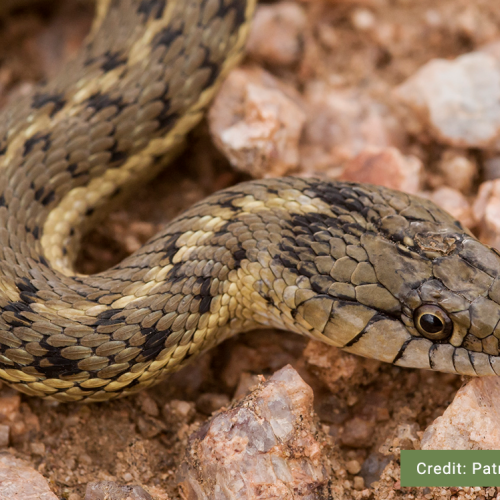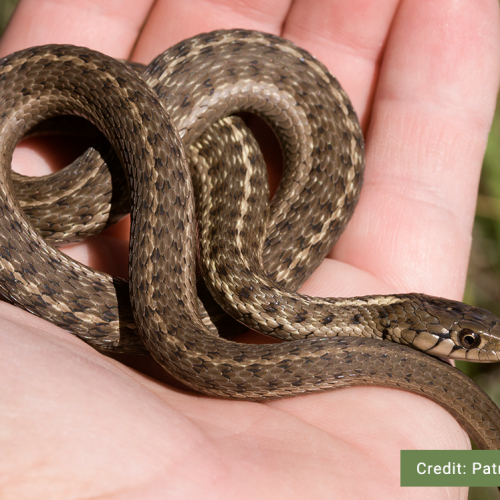Credit: Patrick Alexander
Western Terrestrial Gartersnake
Thamnophis elegans vagrans
Description
Other names: Wandering Gartersnake, Terrestrial Gartersnake
Listen to the Indigenous words for “gartersnake” here!

Similar Species
The Western Terrestrial Gartersnake may be easily confused with the other species of Gartersnake in British Columbia: The Common Gartersnake and the Northwestern Gartersnake. The other two Gartersnake species typically only have 7 upper labialDefinition:Referring to the lips, such as a marking along the lip. scales, compared to 8 in the Western Terrestrial, and the Common Gartersnake tends to have red barring on the sides.
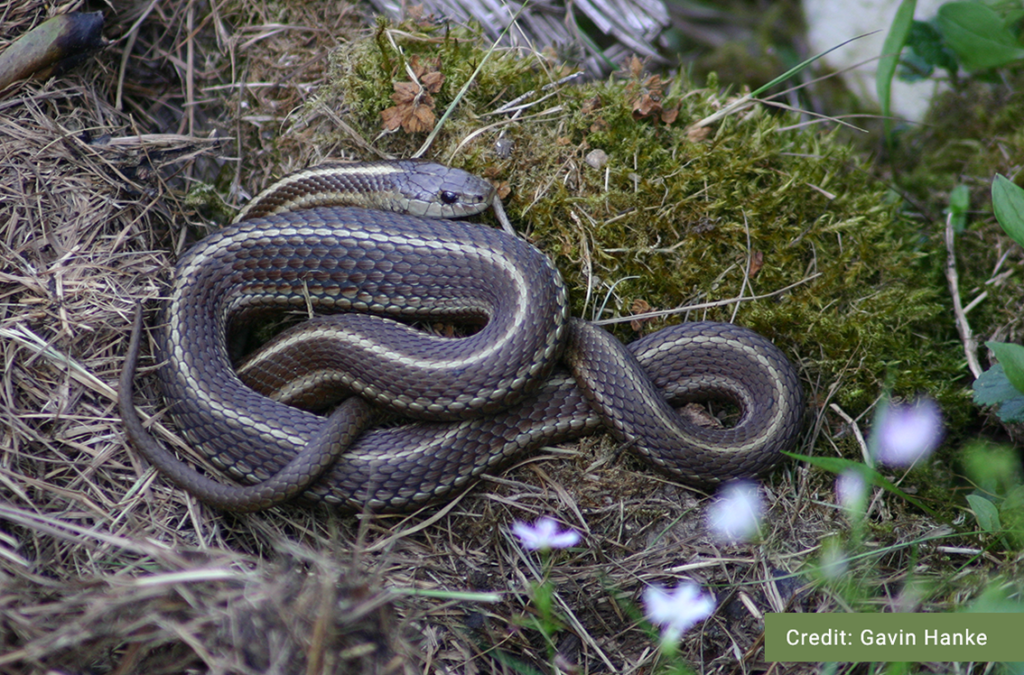
Northwestern Gartersnake
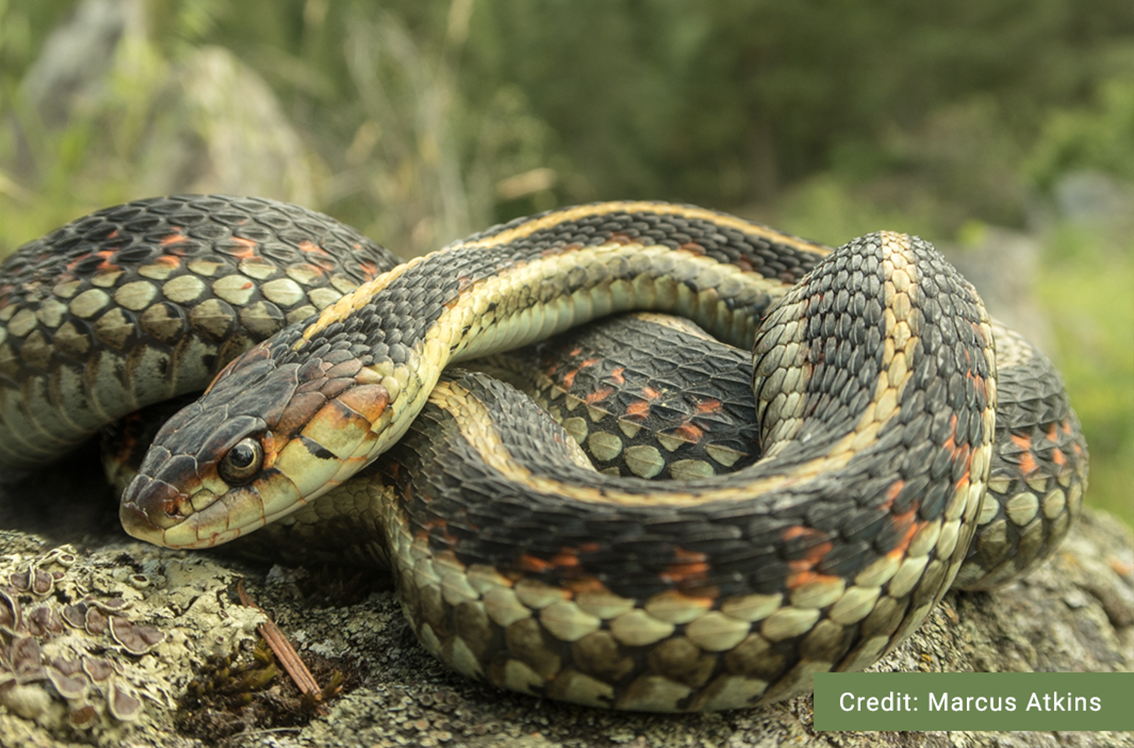
Common Gartersnake
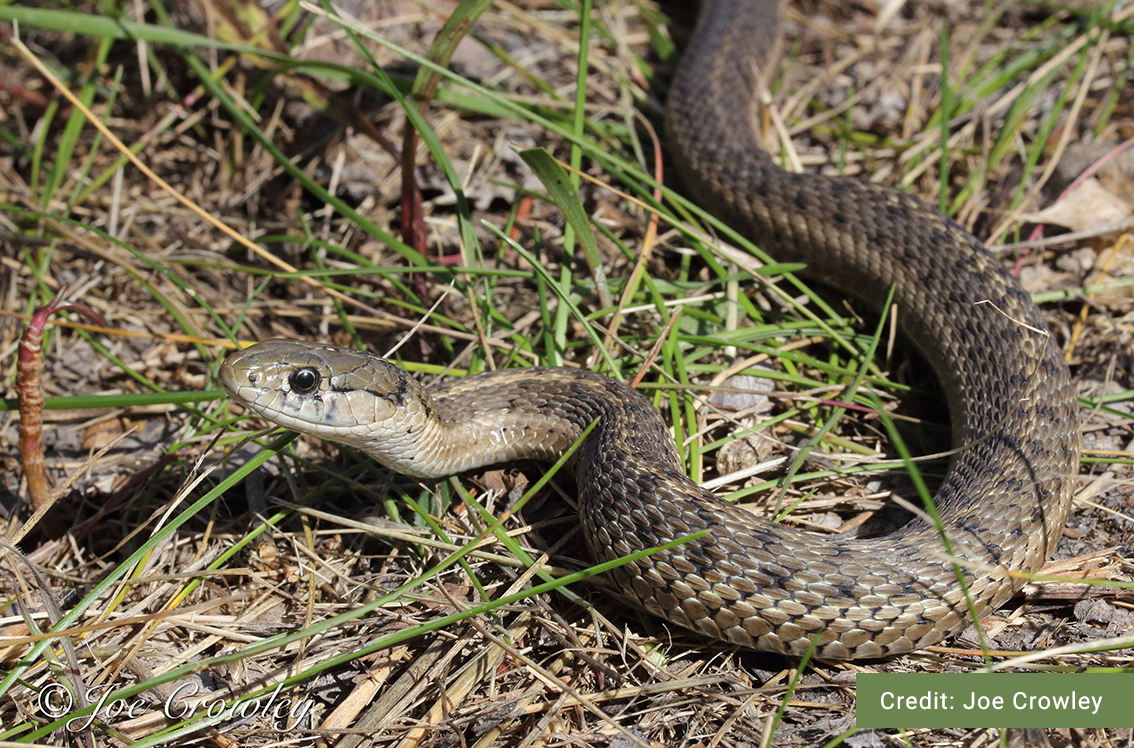
Western Terrestrial Gartersnake
Distribution
Habitat
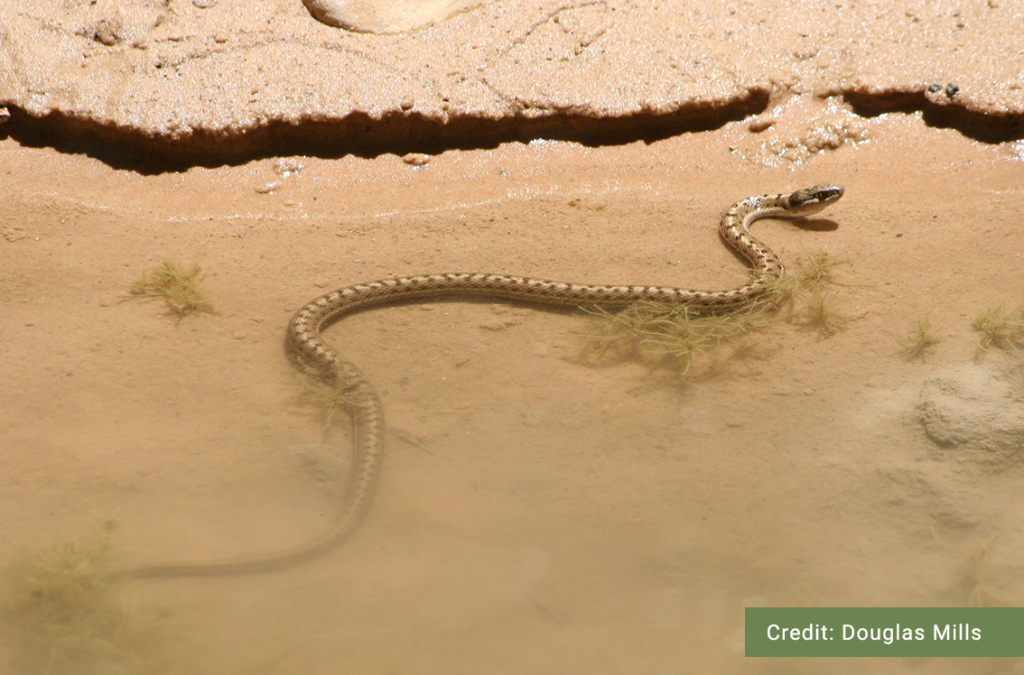
Reproduction
Western Terrestrial Gartersnakes are ovoviviparousDefinition:A reproductive strategy where eggs develop and hatch inside the mother’s body, with the young feeding off the yolk sac until shortly after birth.. Mating occurs in the spring very shortly after emergence from overwintering dens. Males are first to emerge and will either actively seek out females or congregate near den areas awaiting the emerging females. Females will give birth to 3-24 live young in mid-late summer, with larger females giving birth to more young. NeonatalDefinition:A newborn. individuals range from 12-22 cm and have a variety of patterns from solid to checkered to striped. Neonates are independent at birth and grow very quickly in the first few years. Western Terrestrial Gartersnakes can live for more than 20 years.
Diet
Credit: Frank Ritcey
Western Terrestrial Gartersnake Hunting Underwater
Conservation Status
Global: G5 (2016)
Provincial: S5 (2018)
BC List: Yellow
Learn more about conservation status rankings here
Threats

Did You Know?
Species Account Author: Marcus Atkins
B.C. Conservation Data Centre. 2010. Species Summary: Thamnophis elegans. B.C. Minist. of Environment. Available: https://a100.gov.bc.ca/pub/eswp/ (accessed Jun 15, 2021).
Conservation Data Centre. 2011. Conservation Status Report: Thamnophis elegans. B.C. Minist. of Environment. Available: https://a100.gov.bc.ca/pub/eswp/ (accessed Jun 15, 2021).
B.C. Conservation Data Centre. 2021. BC Species and Ecosystems Explorer. B.C. Minist. of Environ. Victoria, B.C. Available: https://a100.gov.bc.ca/pub/eswp/ (accessed Jun 15, 2021).
https://www.bcreptiles.ca/snakes/westterrgarter.htm
http://www.canadianherpetology.ca/species/species_page.html?cname=Terrestrial%20Gartersnake
http://linnet.geog.ubc.ca/efauna/Atlas/Atlas.aspx?sciname=Thamnophis%20elegans

